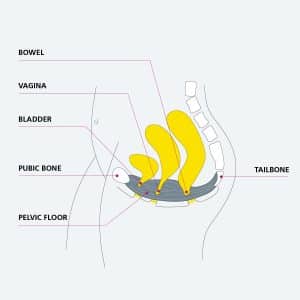How to do your pelvic floor exercises
Sit comfortably on a chair with your knees apart, or if it is more comfortable, you can do them lying down. To contract your pelvic floor – tighten your back passage, as if you are trying to stop yourself from breaking wind. Don’t squeeze your buttocks or leg muscles, it is an internal contraction. Do not hold your breath, continue to breathe normally while doing these exercises.
There are some other prompts that might be useful – find the one that works best for you:
- Tighten your vagina as if you are trying to stop the flow of urine
- Try to feel the muscles tighten upwards and forwards towards the pubic bone.
- Feel the muscles working together, then relax.
How often should I do these exercises?
Aim to do your pelvic floor exercises 3 times each day and continue them long term. You should be aiming to do 10 quick and 10 slow contractions (10 seconds holds) once per day, for the rest of your life.
To begin with, if you haven’t practiced the exercises before, it can feel difficult. Don’t panic, just practice gently contracting and relaxing up to 10 repetitions, 3-4 times per day.
Once you feel you have mastered this and you can do the exercises comfortably – have a go at holding this contraction.
How many seconds should I hold the contraction for?
Aim for 5 seconds to begin, when you let go – can you feel the muscles relax?
If not, you have held the contraction for too long, try again with a shorter hold – even just one second. Some women may only be able to only hold for 1-2 seconds. Others as many as 8-10 seconds. Don’t panic if you are not able to feel very much. It may take 6-8 weeks for the swelling to go down, and for you to feel confident in doing these exercises. Keep practicing these exercises. It is important to discover your hold time, and gradually build this up, to a maximum of 10 seconds.
